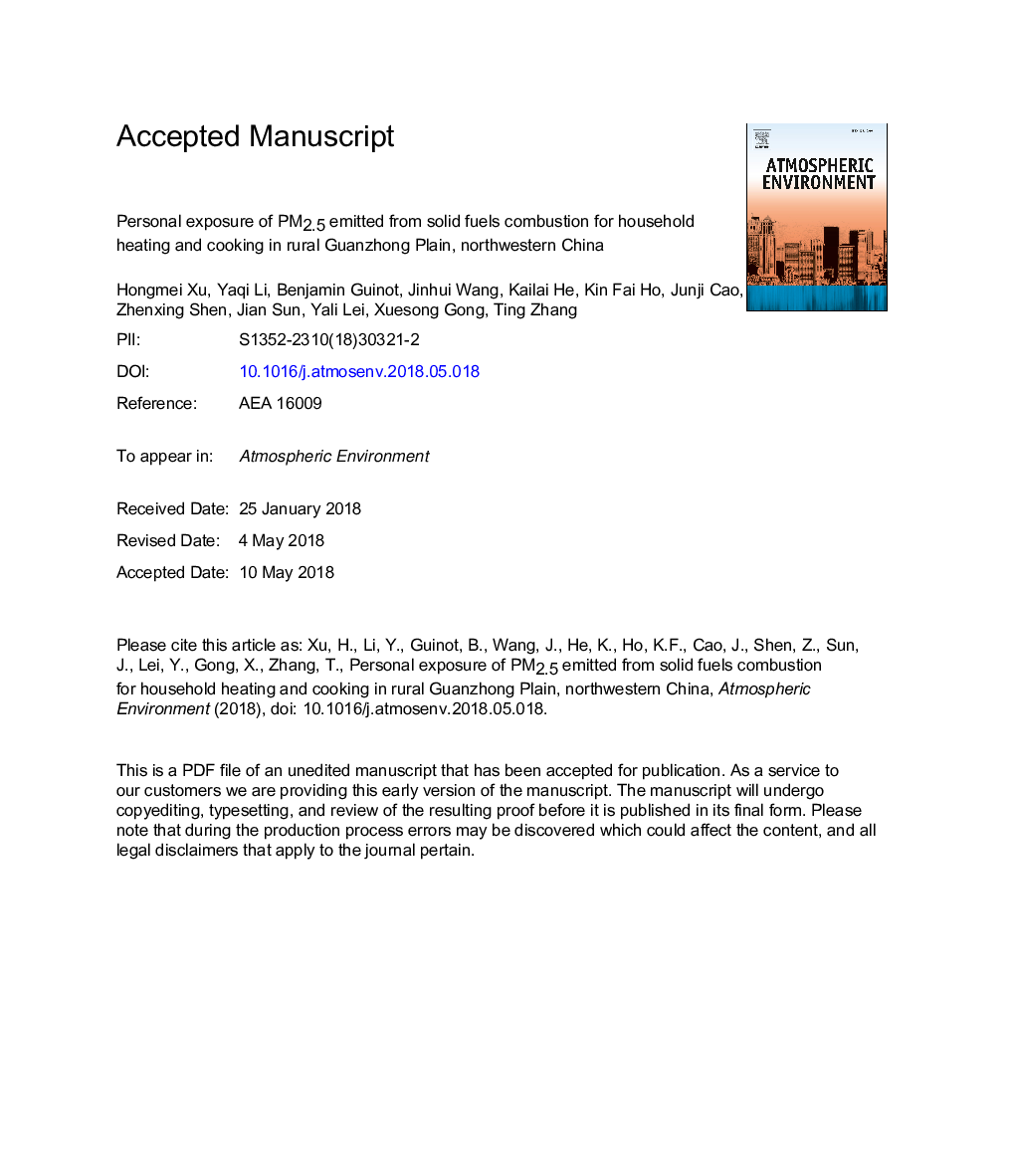| کد مقاله | کد نشریه | سال انتشار | مقاله انگلیسی | نسخه تمام متن |
|---|---|---|---|---|
| 8863736 | 1620289 | 2018 | 35 صفحه PDF | دانلود رایگان |
عنوان انگلیسی مقاله ISI
Personal exposure of PM2.5 emitted from solid fuels combustion for household heating and cooking in rural Guanzhong Plain, northwestern China
دانلود مقاله + سفارش ترجمه
دانلود مقاله ISI انگلیسی
رایگان برای ایرانیان
کلمات کلیدی
موضوعات مرتبط
مهندسی و علوم پایه
علوم زمین و سیارات
علم هواشناسی
پیش نمایش صفحه اول مقاله

چکیده انگلیسی
Household solid fuel combustion for heating and cooking in rural areas is an important source of fine particulate matter (PM2.5) in northwestern China, which largely contributes to PM2.5 personal exposure concentrations during the cold winter. There is a general lack of understanding about the personal exposure to PM2.5 and to its chemical components emitted from domestic solid fuel combustion in northwestern Chinese rural populations. In this work, personal exposure to PM2.5 was sampled using a portative device together with fixed indoor and outdoor fixed samplings in Guanzhong Plain in December 2016 for the purpose of characterizing personal exposure to PM2.5 as a function of different solid fuels used in rural households. The average housewife's personal exposure to PM2.5 concentration was 263.4â¯Â±â¯105.8â¯Î¼gâ¯mâ3 (1Ï, nâ¯=â¯30), which was about 40% higher than the values found indoors (186.5â¯Â±â¯79.5â¯Î¼gâ¯mâ3, 1Ï, nâ¯=â¯30) and outdoors (191.0â¯Â±â¯85.3â¯Î¼gâ¯mâ3, 1Ï, nâ¯=â¯30). High personal exposure PM2.5 levels were mainly related to the ignition of solid fuels for heating and cooking. Correlations among personal exposure, indoor and outdoor PM2.5 levels and their mutual ratios were computed to investigate how personal exposure to fine aerosols can be related to microenvironmental PM2.5 levels and to individual activities. The results showed that households using electric power for heating and cooking were characterized by an average personal exposure PM2.5 value of 156.8â¯Â±â¯36.6â¯Î¼gâ¯mâ3 (1Ï, nâ¯=â¯6) while personal exposure to PM2.5 in households using solid fuels was twice higher (310.8â¯Â±â¯90.4â¯Î¼gâ¯mâ3, 1Ï, nâ¯=â¯24). Solid fuel combustion products and related secondary formed species dominated PM2.5 mass in personal exposure, indoor and outdoor samples. Motor vehicle emission and various dust sources were two other main contributors identified. Our results demonstrated that the use of clean energy could be an effective measure to reduce personal exposure levels of PM2.5 emitted from domestic solid fuels combustion in winter in rural areas, which implied that the government should speed up the upgrade of the heating and cooking equipment fleet to protect the health of rural residents in northwestern China.
ناشر
Database: Elsevier - ScienceDirect (ساینس دایرکت)
Journal: Atmospheric Environment - Volume 185, July 2018, Pages 196-206
Journal: Atmospheric Environment - Volume 185, July 2018, Pages 196-206
نویسندگان
Hongmei Xu, Yaqi Li, Benjamin Guinot, Jinhui Wang, Kailai He, Kin Fai Ho, Junji Cao, Zhenxing Shen, Jian Sun, Yali Lei, Xuesong Gong, Ting Zhang,